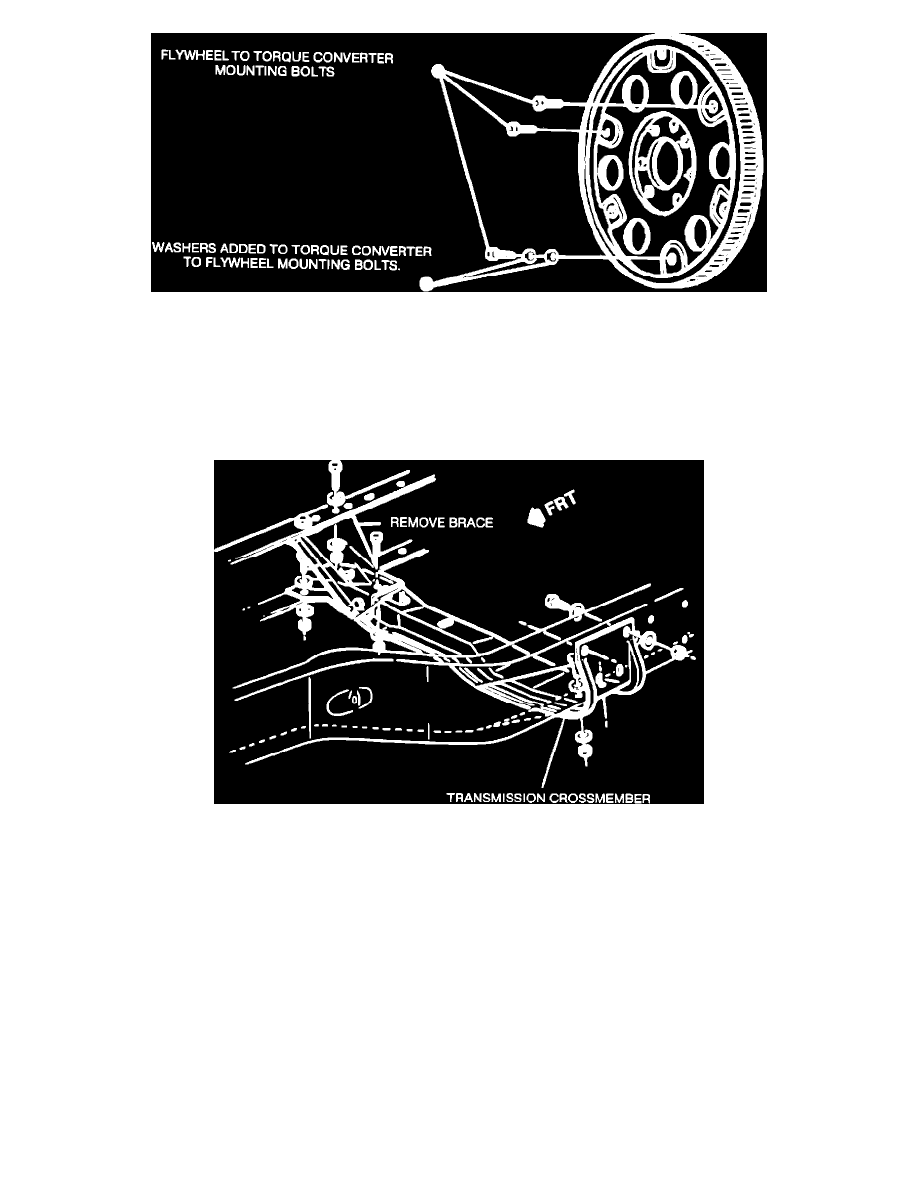K 30 P/U 4WD V6-262 4.3L (1985)

FIGURE NO. 2 - FLYWHEEL BOLTS
5.
If re-indexing the torque converter does not affect the vibration, remove one of the torque converter to flywheel mounting bolts and install two flat
washers (M10 x 3 mm thick) between the bolt head and the flywheel and retorque to 57-65 N-m (42-50 ft.lbs.) as per instructions in Figure No. 2.
Retest the engine for the vibration. Use this test on all three converter bolt locations, one bolt at a time, to reduce the vibration. If adding washers
to the torque converter bolts does not correct the vibration, remove the washers and torque the bolts to 57-65 N-m (42-50 ft.lbs.). If adding
washers to the torque converter bolts corrects the vibration, the washers can be left attached to the bolt, but the bolt must be installed using GM
thread locking compound P/N 1052624 and torqued to 57-65 N-m (42-50 ft. lbs.).
FIGURE NO. 3 - TRANSMISSION SUPPORT BRACE
6.
If the procedure outlined in step 4 does not correct the vibration, raise the truck and remove the transmission crossmember support brace, see
Figure No. 3.
NOTE:
STEP #7 CAN ONLY BE DONE IF THE STRUT BARS ARE IN PLACE. THE STRUT BARS ARE NECESSARY TO MAINTAIN
STRUCTURAL INTEGRITY BETWEEN THE ENGINE AND TRANSMISSION.
7.
Remove the two upper transmission to engine mounting bolts and discard. Remove the four remaining transmission to engine mounting bolts, one
at a time, and apply one drop of thread locking compound P/N 1052624 to the thread and reinstall the bolts and torque to 44- 60 N-m (32-45
ft.lbs.)
